Get Rid of Stretch Marks Forever: The Laser & RF Microneedling Truth
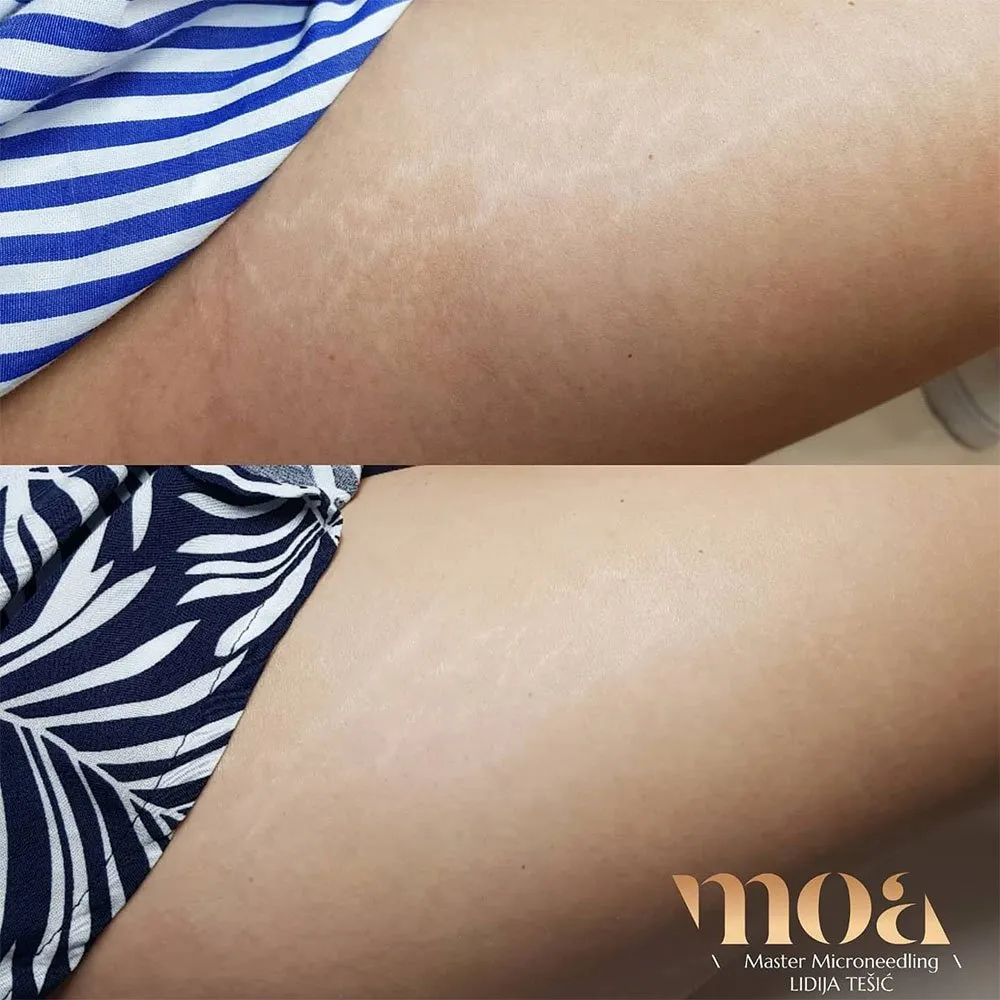
Introduction to stretch marks and the need for treatment
Stretch marks are a common skin condition that affects many people around the world, and they can appear for various reasons, such as rapid weight gain or loss, pregnancy, or even genetic predisposition. While they are not harmful to your health, they can affect your self-confidence and make you feel insecure about your appearance. However, the good news is that many treatment options can help reduce the appearance of stretch marks on your skin.
Benefits of Laser & RF Microneedling
When treating stretch marks, two of the most popular options are laser and RF microneedling treatments. Both methods work by stimulating collagen production in the affected areas, which helps to improve the texture and tone of your skin. Here are some of the benefits of these treatments:
Laser Treatment
- Can be used to treat both old and new stretch marks
- Non-invasive procedure with minimal downtime
- High success rate in reducing the appearance of stretch marks
- Stimulates collagen production for long-lasting results
RF Microneedling
- Can be used on all skin types, including darker skin tones
- Improves the texture and tone of your skin, in addition to reducing the appearance of stretch marks
- Minimally invasive procedure with a short recovery time
- Stimulates collagen production for long-lasting results
Both laser and RF microneedling treatments are safe and effective methods for reducing the appearance of stretch marks on your skin. With the help of a professional dermatologist or aesthetician, you can choose the right treatment for you and achieve smoother, more even-looking skin.
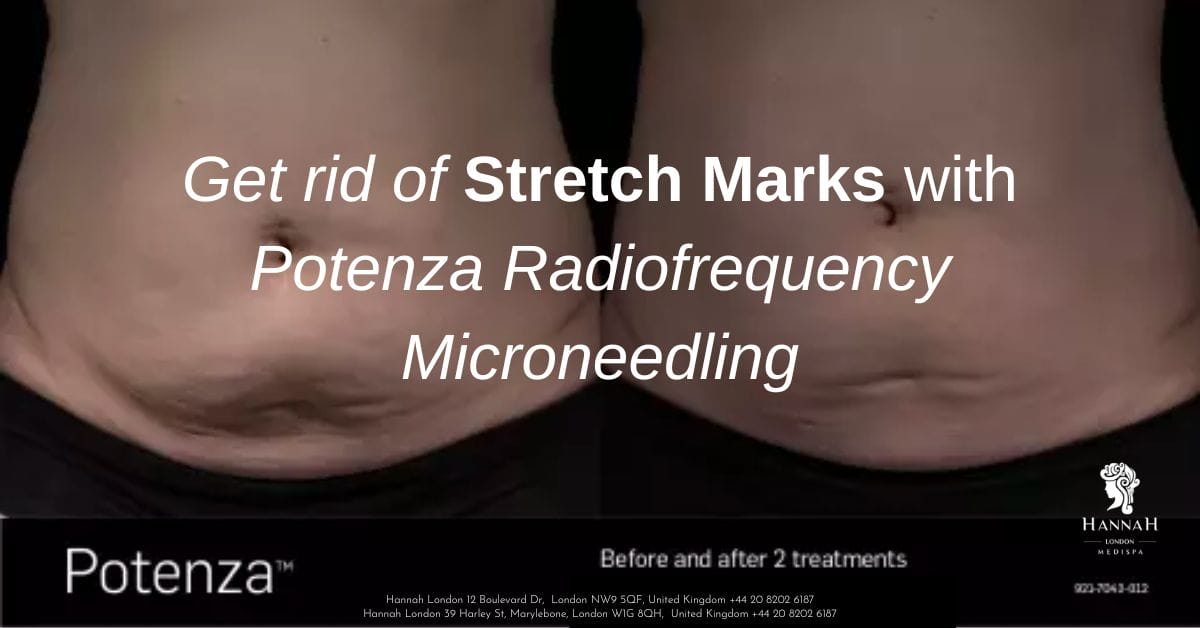
Stretch Marks: Causes and Types
What are stretch marks
If you have stretch marks, know that you are not alone. Stretch marks are a common skin condition that affects many people worldwide. They occur when the skin stretches beyond its capacity, causing the underlying tissue to tear. As a result, the skin shows visible lines, typically in the form of bands or stripes, ranging from one to several centimetres in length.
Causes of stretch marks
There are several reasons why stretch marks can occur, including:
- Rapid weight gain or loss
- Pregnancy
- Puberty
- Genetic predisposition
- Hormonal changes
- Medical conditions, such as Cushing's syndrome or Marfan syndrome
If you are experiencing any of the above, you may be at risk of developing stretch marks. However, it's essential to remember that stretch marks are entirely harmless and do not pose any risk to your health.
Types of stretch marks
Stretch marks can occur on any part of the body, but they are more commonly found in areas such as:
- Abdomen
- Hips
- Thighs
- Breasts
- Upper arms
Based on their appearance, stretch marks can be classified into two types:
- Red or purple stretch marks: These are newly formed stretch marks with a reddish or purplish hue. They can be easily treated with various methods, such as laser or RF microneedling.
- White or silver stretch marks are older stretch marks that have faded over time and appear white or silver. They are harder to treat, but laser or microneedling can visibly reduce their appearance.
Stretch marks are a normal occurrence in many people's lives. Instead of feeling embarrassed or self-conscious about them, it's essential to embrace your body and seek treatment if you wish to reduce their appearance. With the help of professional dermatologists or aestheticians, you can choose the right treatment for your skin and achieve smoother, more even-looking skin.
Laser Stretch Mark Removal
How laser treatment works
If you want to reduce the appearance of your stretch marks, laser treatment may be an excellent option. A dermatologist or aesthetician uses a specialized laser to stimulate collagen production in the affected area during the procedure. As a result, the skin on and around the stretch marks becomes smoother and more even in texture.
The laser targets the pigmented cells in the stretch marks, which absorb the light energy and convert it into heat. This heat, in turn, stimulates the production of new collagen fibres, which help to fill in the gaps created by the torn tissue beneath the skin.
Laser Stretch Mark Removal benefits
One of the primary benefits of laser stretch mark removal is that it is a non-invasive treatment that requires no downtime. You can resume your normal activities immediately after the procedure, and there is no need for anaesthesia or incisions.
Another benefit of laser treatment is that it offers long-lasting results. Unlike other treatments that may require multiple sessions or ongoing maintenance, laser stretch mark removal typically requires only a few treatments to achieve the desired outcome.
Additionally, laser treatment is known to be highly effective in reducing the appearance of stretch marks. Studies have shown that it can improve the skin's colour and texture, resulting in a more even and youthful-looking complexion.
Laser Stretch Mark Removal vs other treatments
Compared to other treatments, such as microneedling or topical creams, laser stretch mark removal is often considered the gold standard in effectiveness and efficiency.
While microneedling can help stimulate collagen production and improve skin texture, it may not be as effective at reducing the appearance of deeper, older stretch marks. Similarly, topical creams may help moisturize the skin and improve elasticity, but they are often not powerful enough to produce significant results.
In contrast, laser treatment can penetrate deeper into the skin, directly targeting the pigmented cells in the stretch marks. As a result, it can produce more dramatic and noticeable results in a shorter amount of time.
Laser treatment may be an excellent option if you are looking for a safe and effective way to reduce the appearance of your stretch marks. With its many benefits and proven efficacy, it is no wonder that laser stretch mark removal has become a popular choice among both men and women worldwide.
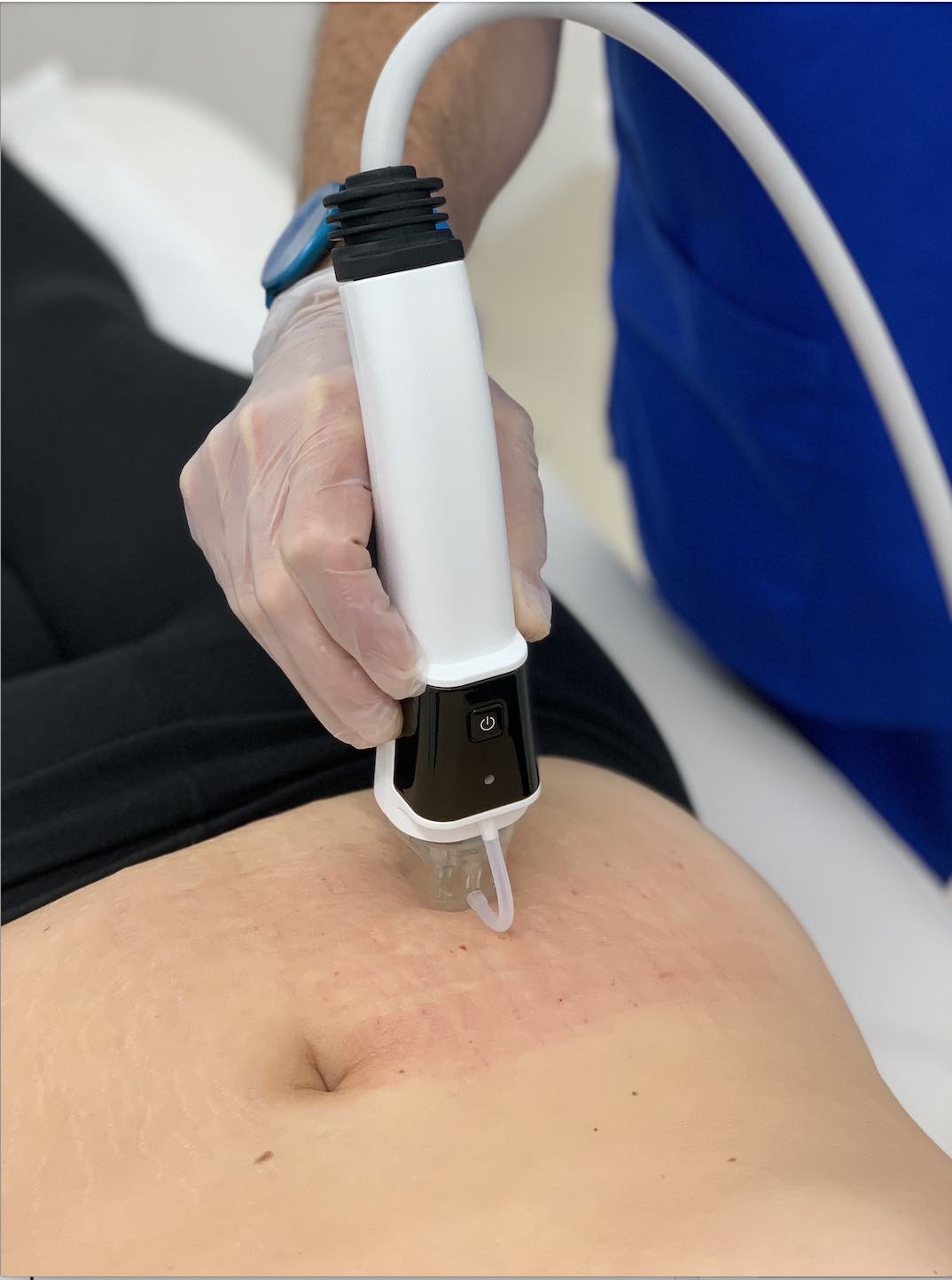
RF Microneedling
What is RF Microneedling
If you're searching for a non-surgical treatment to improve the appearance of your skin, RF Microneedling might be the ideal choice for you. RF Microneedling is a minimally invasive treatment that stimulates collagen and elastin production in the skin. A specialist uses a specialized device to administer radiofrequency energy to the affected area, which helps to rejuvenate the skin and diminish the appearance of wrinkles, fine lines, and scars.
RF Microneedling benefits
One of the significant benefits of RF Microneedling is that it's a quick and straightforward treatment that delivers noticeable results with limited downtime. The treatment doesn't require incisions or anaesthesia; you can resume your regular activities soon after the procedure.
RF Microneedling is also a highly effective treatment, delivering long-lasting results. The treatment can help reduce the appearance of fine lines, wrinkles, and acne scars and improve skin texture.
Another advantage of RF Microneedling is that it suits people with all skin types. Unlike other treatments like chemical peels, RF Microneedling doesn't cause significant skin damage or hyperpigmentation, making it a safe and effective option for anyone looking to improve their skin's quality and texture.
RF Microneedling vs other treatments
Compared to other treatments like chemical peels or microdermabrasion, RF Microneedling is more precise and targeted. While chemical peels and microdermabrasion use chemical solutions or abrasive tools to remove the top layer of the skin, RF Microneedling delivers radiofrequency energy to the deeper layers of the skin, stimulating collagen and elastin production.
RF Microneedling is also more effective than other treatments like dermal fillers. While fillers can help plump up the skin in specific areas to reduce the appearance of wrinkles and fine lines, they don't address the underlying cause of the ageing process, which is a decrease in collagen and elastin in the skin.
RF Microneedling is a highly effective and safe procedure that can help improve the appearance of your skin. With its many benefits and proven efficacy, RF Microneedling is an excellent choice for anyone looking to achieve youthful-looking skin and restore their confidence in their appearance.

Laser vs RF Microneedling: Which is right for me?
Factors to Consider when Choosing between Laser & RF Microneedling
When comparing laser and RF Microneedling treatments, it's essential to consider your skin type and the specific concerns you'd like to address. While both treatments effectively rejuvenate the skin, they use different technologies and techniques.
Laser treatment uses a beam of light to penetrate the skin's deeper layers, targeting specific pigments or concerns like acne scars or hyperpigmentation. On the other hand, RF Microneedling uses tiny needles that deliver radiofrequency energy to stimulate collagen and elastin production in the skin.
Pros and Cons of Both Treatments
Laser Treatment
Pros:
- Precise and targeted treatment
- Can treat a variety of skin concerns
- Results can be seen after a few treatments
Cons:
- Can cause skin damage and hyperpigmentation in some cases
- Downtime can be longer than RF Microneedling
RF Microneedling
Pros:
- Safe and effective for all skin types
- Delivers long-lasting results
- Requires minimal downtime
Cons:
- Not as precise as laser treatment
- May require more treatments to achieve desired results
Ultimately, the choice between Laser and RF Microneedling comes down to personal preference and the specific concerns you'd like to address in your skin. If you're looking for a more precise treatment that can target specific concerns like acne scars, hyperpigmentation or sun damage, laser treatment may be the right choice for you. On the other hand, if you're looking for a safe and effective treatment that can improve overall skin texture and quality while stimulating collagen production, RF Microneedling may be a better choice.
Consulting with a specialist can help you make an informed decision based on your skin's unique needs.
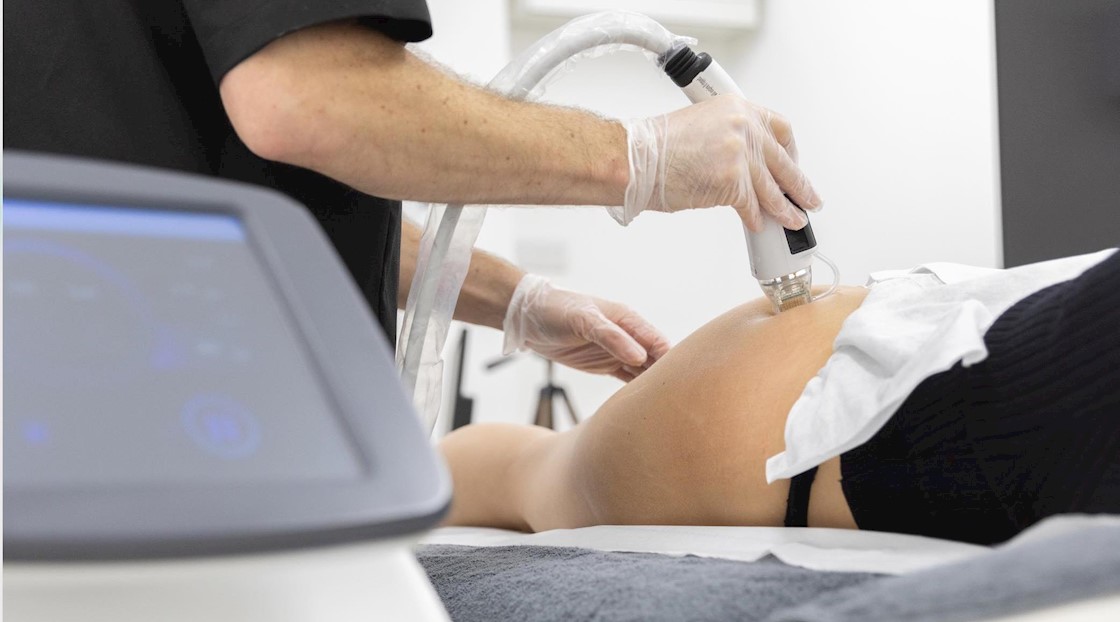
Treatment Process
What to expect during Laser & RF Microneedling treatment
Both laser and RF Microneedling treatments typically take between 30 minutes to an hour, depending on the size of the treatment area and the severity of your skin concerns. During the treatment, your specialist will apply a numbing cream to the treatment area to minimize discomfort.
During laser treatment, you may feel warm as the laser penetrates your skin. The therapy may also produce slight discomfort or stinging, which the numbing cream can minimize.
RF Microneedling, on the other hand, involves using tiny microneedles that penetrate the skin to deliver radiofrequency energy. Most patients describe the sensation as mild discomfort or warmth, manageable with numbing cream.
How to prepare for treatment
Before your laser or RF Microneedling treatment, you should refrain from using products that may irritate your skin, like exfoliants or retinol creams. You should also avoid sun exposure and tanning beds for at least two weeks before treatment.
On the day of your appointment, ensure clean skin and avoid wearing makeup or skincare products that can interfere with the treatment.
Aftercare instructions
After your treatment, your skin may feel slightly tender or sensitive, but this should subside within a few hours. You should avoid exposure to direct sunlight and tanning beds for at least two weeks after treatment.
You should also avoid applying harsh or irritating skincare products to the treatment area for at least three days after treatment. Applying a high-quality moisturizer can help soothe the skin and promote healing.
It's important to follow all aftercare instructions provided by your specialist to ensure the best results from your laser or RF Microneedling treatment.
Ultimately, choosing between laser and RF Microneedling comes down to personal preference and the specific concerns you want to address in your skin. Both treatments can significantly improve your skin's texture, quality, and overall appearance, and consulting with a specialist can help you make an informed decision based on your skin's unique needs. By preparing for your treatment and following the recommended aftercare instructions, you can enjoy the long-lasting benefits of laser or RF Microneedling for years.
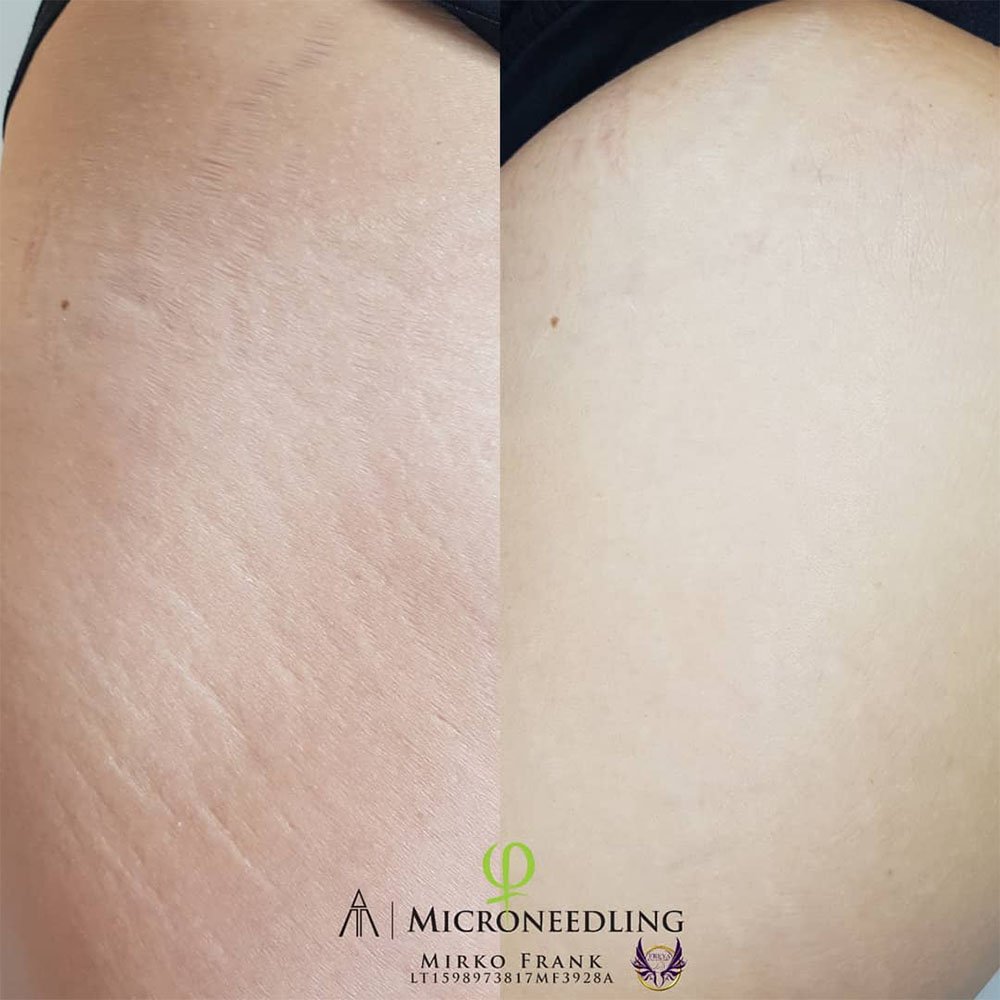
Risks and Side Effects
Common risks and side effects of Laser & RF Microneedling treatment
The common risks and side effects of laser or RF Microneedling include discomfort, redness, and swelling of the treated area. Infection and scarring may occur in rare cases.
How to minimize risks and side effects
To minimize the risks and side effects of the treatment, it's essential to choose a licensed specialist with experience in laser or RF Microneedling. A medical professional can also recommend the appropriate treatment after evaluating your skin condition and concerns.
Inform your specialist about any allergies or medical conditions that you have. Follow all instructions before, during, and after the treatment to prevent complications.
Laser and RF Microneedling treatments can significantly improve your skin's quality, texture, and general appearance. You can expect lasting benefits by preparing for the treatment, understanding the procedure, and following aftercare instructions. Consult a specialist to decide which treatment is best suited for your skin.

Expected Results
How long until results are visible
The results of laser or RF Microneedling treatments may vary depending on your skin concerns and the treatment plan. Some people may see the benefits of the treatment immediately after the session, while others may have to wait for a few days to weeks to see the difference. Generally, you can expect the full benefits of the treatment to be visible after two to three months.
Results to expect from Laser & RF Microneedling treatment
Laser and RF Microneedling treatments improve skin quality, texture, and overall appearance. Expect the following results:
- Reduction of fine lines and wrinkles
- Improvement in skin firmness and elasticity
- Reduction in the appearance of scars and stretch marks
- Reduction in pore size and blackheads
- Reduction in hyperpigmentation and sun damage
The benefits of the treatment are long-lasting, but it's important to follow a proper skincare regimen to maintain the results. With proper care, you can enjoy the benefits of the treatment for up to a year or longer.
Laser and RF Microneedling treatments can provide you with significant improvements in your skin's quality and appearance. The treatments are relatively safe and effective, with minimal risks and side effects. By following all the pre and post-treatment instructions provided by your specialist, you can achieve the best possible results from the treatment. So, consult a specialist and get the most out of your treatment.
